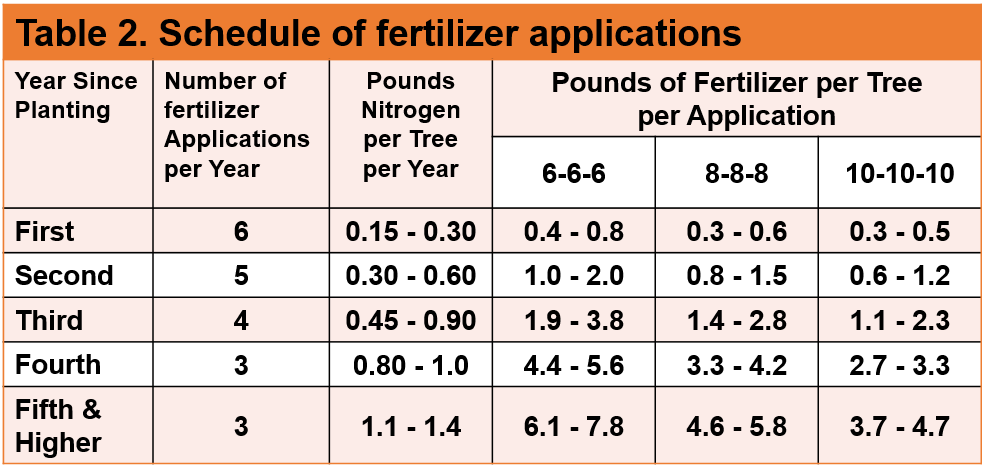by Carrie Stevenson | Apr 7, 2017
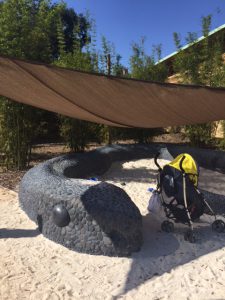
This sandbox area at Bok Tower Gardens is bordered by a stone “snake” and covered for shade, making it a real draw for small children and their parents. Photo credit: Carrie Stevenson, UF IFAS Extension
I recently had the pleasure of visiting Bok Tower Gardens in Lake Wales, Florida and experienced one of their newest additions, a children’s garden. As much a playground as a place for growing plants, it was full of whimsical energy and invitations to explore. The entire area encouraged children to reach beyond their comfort zones and engage with nature, including an outdoor art space, a climbing area made of lean-to logs, and a covered sand “box” shaped like a snake.
In recent years, sociologists, educators, and health experts have bemoaned the loss of free outdoor play in the lives of children. Multiple factors, including the rise in electronic entertainment, more organized, practice-heavy youth sports, fears of crime/abduction or just lack of safe access to ride bikes or walk, have contributed to a drop in the frequency and length of time that kids spend outdoors playing on their own. Many readers can probably relate to my childhood. We would take off on bikes in the mornings during summer and not come back until we got hungry. We didn’t have cell phones or GPS, and we knew all of our neighbors so we had a place to go if we had a rare emergency. The results of fewer child-led outdoor explorations include increases in childhood obesity, fear of the outdoors, difficulty with balance, agility, and managing excess energy.
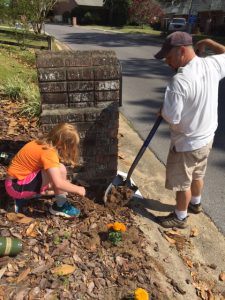
When children help plant a garden, they will be more interested in taking care of it–and tasting the fruits (or vegetables) of their labor! Photo credit: Carrie Stevenson, UF IFAS Extension
One way to encourage kids to get outside and explore is to plant something in your yard, school, or nearby park that can serve double-duty as a window to explore. Landscaping with young people in mind should include a variety of plants with interesting heights and textures, fruit-bearing shrubs or trees to engage the sense of taste, and lots of color. Logs to sit and climb on are perfect for developing balance and learning to take calculated risks. In addition, it is important to engage kids in the design and planting of the garden or landscape–if they have a hand in developing the area, they’ll be more invested in its success. In fact, research has consistently shown that children who help care for school gardens are more willing to try the food they’ve helped to grow. Beyond expanding a healthy palate, participation in school gardens can increase “soft” skills, such as the ability to work effectively in a team, better communication, and an increased appreciation for nature. Many kids also do better in science and gain a deeper understanding of proper nutrition after working with gardens.
If you are not a gardener or landscaper but interested in taking children outdoors where they can learn and become more comfortable, the US Forest Service has taken the research related to “nature-deficit disorder” so seriously that multiple “Children’s Forests” have been developed. While there are still very few in the southeastern US, there are dozens around the country. The stated goals for a Children’s Forest are: 1) Connect kids, families, and adults to healthy outdoor activities across all landscapes. 2) Create new education and career opportunities. 3) Foster an understanding of how our changing environment affects the world and how people can work together to embrace these changes. 4) Provide professional development opportunities for educators, with emphasis on conservation and the natural world. Local state and national parks often provide excellent programs for families as well, such as the National Park System’s Junior Ranger Program.
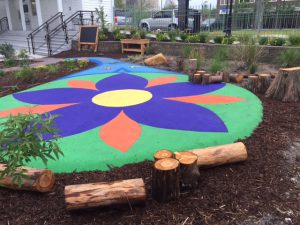
The landscaping at this coffee shop uses color, log seating/climbing, and a variety of interesting plants to attract children to engage with the outdoors.
A program in Gainesville called “Kids in the Woods” has recognized the lack of youth engagement in the outdoors and created field trips and curriculum for students designed to help make sure they are comfortable in the great outdoors. No matter how you engage the youth in your life with nature, it is important that they get outside, get dirty, and go beyond their comfort zone. Their health, academic success, and even motor skills needed for sports and daily life will reap the benefits!
by Julie McConnell | Apr 7, 2017
It’s really tempting to buy a tree and plant it in the middle of your lawn or directly in front of your picture window, but instead take some time to choose the best spot first. Several considerations such as maintenance and mature size should be taken into account before the site is selected.
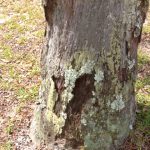
Mowing close to the trunk of this Pindo palm has caused repeated injury to the trunk. Photo: JMcConnell, UF/IFAS
Placing a tree in a lawn area without creating a bed can lead to maintenance issues for both the tree and the turfgrass. It is easy to simply cut out a small patch of turf the size of the rootball and install a tree, however, as the grass grows up towards the trunk over time maintaining that grass will become difficult. It is common to see mechanical injuries to tree trunks because weed eaters or mowers have chipped away at the bark when trying to cut the grass. Other potential problems are irrigation zones calibrated for turf delivering the wrong amount of water to trees and herbicides used on grass that may cause injury to trees.
Over time, as the tree canopy grows, it will create shade and any grass trying to grow in that area will thin and be more susceptible to disease and insect pressure. By creating a large ornamental bed for your tree, you will prevent some pitfalls associated with placing the tree in the lawn.
Another common mistake is planting a tree too close to a house or other structure. It can be difficult to imagine how large a tree will grow at maturity because it is not a quick process. Trees placed close to houses may grow into eaves and shed leaves onto roofs and into gutters. This adds to maintenance and can provide mosquito breeding grounds. Also, some tree roots may interfere with walkways or septic systems and should be sited far enough away to avoid these issues.
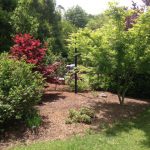
These Japanese Maples are planted in a bed separate from the lawn making care for both plant types easier. Photo: JMcConnell, UF/IFAS
Be sure to research any tree you plan to install to find out ideal growing conditions and mature size. If you plan ahead and use good maintenance practices, a tree can become an valuable part of your home landscape to be enjoyed for years to come.
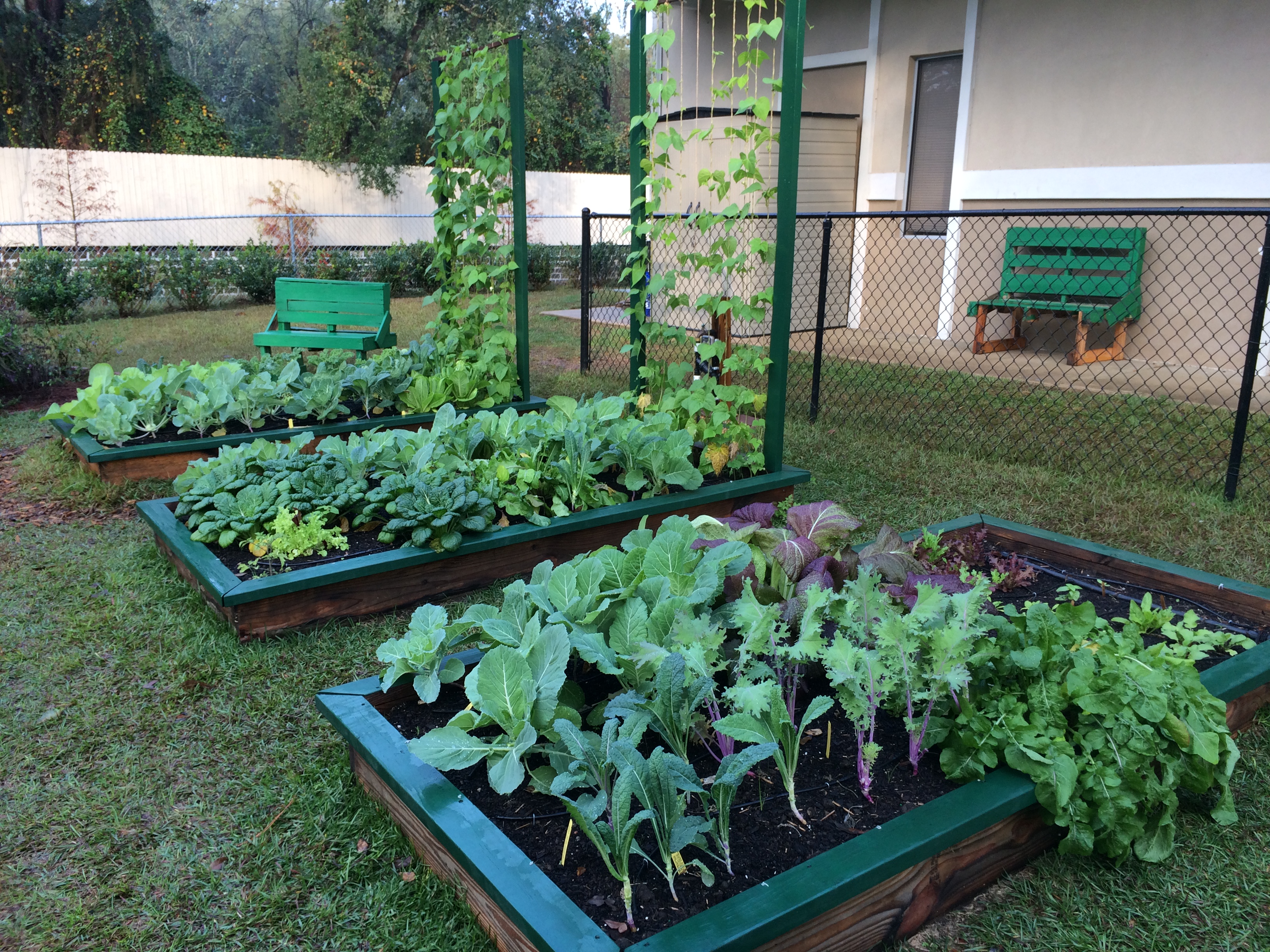
by Molly Jameson | Mar 1, 2017

Raised-bed gardening can maximize production in a small amount of space. Photo by Molly Jameson.
Want to start a vegetable garden, but don’t know where to start? Are you seeing rectangular boxes popping up all over your neighbors’ yards and wondering why? Well, I am here to spread the news of raised-bed gardening!
Raised-bed gardening is a convenient way to grow vegetables without worrying about the quality of your soil. This is because you will be bringing in a high quality soil mix to your site. Vegetable plants need nitrogen, phosphorus, potassium, and many other nutrients to grow and mature properly. In many Florida Panhandle soils, we either have too much sand, too much clay, and nearly always, not enough organic matter. Organic matter results from the various stages of decay of anything that was alive. Think of it as the “glue” that holds the soil together, improves both soil moisture-holding capacity and drainage, and slowly releases nutrients that become available to the plant.
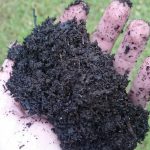
Organic matter is the “glue” that will hold your soil together. Photo by John Edwards.
Although you could add nutrients and organic materials to your soil without building a raised bed, the walls of a raised bed will hold your soil in place, reduce erosion, and even help keep out weeds. Here are a few things to consider when planning the installation of a raised-bed garden:
Location
The most important thing to consider when picking your location is sunlight. Vegetable plants need a lot of direct sunlight for optimum production. Leafy vegetables (lettuce, kale, arugula) can tolerate four to five hours, but fruiting crops (tomatoes, squash, peppers) generally need six hours of full sunlight to grow strong and produce fruit.
When starting a garden, remember that we are in the northern hemisphere, and this means the sun dips to the south, especially in the winter. Objects therefore cast a shadow to the north, so pay attention to the position of southern tree lines, houses, and anything else that may block the sun. If you must choose, morning sun is better than afternoon sun, as afternoon sun can be very extreme in our area, especially in the summer.
Lastly, consider visibility! If you stick your garden in the very back corner of your yard, how often will you see it? The more visible it is in your daily life, the more likely you will notice easy-to-pull weeds, when your garden needs watering, what is ready to be harvested, and everything else that goes on in the garden.
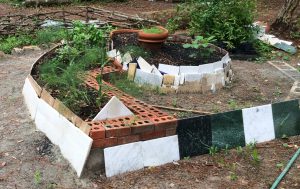
Although wood is most popular, you can use materials such as concrete, bricks, or tiles to build a raised bed. Photo by Molly Jameson.
Materials
Now you have chosen a perfect garden location. What materials should you use to build your raised bed? Lumber is the most popular material. But you could use concrete blocks, bricks, tiles, or anything else that can support soil. You can make your beds as long as you like, but the important thing to remember is not to make the raised bed wider than four feet. This will allow you to reach all areas of your soil without stepping into the bed, which causes compaction. If you are working with kids, two or three feet wide is even better. You should make the height of your bed 10 to 12 inches, which will allow good drainage and enough space for your vegetable plants to develop strong roots.
When choosing lumber, you can go with untreated or treated wood. Within the last 15 years, wood preservatives considered unsuitable for raised-bed gardening have been phased out. There is well-documented research that has shown the newer products are considered safe for gardening. Although untreated wood typically will not last as long as treated, even treated wood will still begin to decompose after a few seasons. Either way, connect your wood with lag bolts, instead of nails, to hold the wood together tightly.
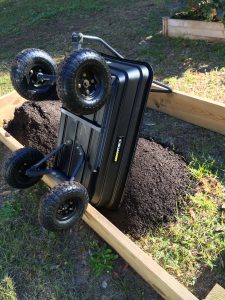
When filling a four ft. by eight ft. raised bed, you will need about 1 cubic yard of soil mix. Photo by Molly Jameson.
Soil
Now that you have your raised-bed structure built, what will you put in it? There are many landscape and nursery companies that can offer vegetable garden soil mixes for purchase in bulk. Typically, they will be about 50 percent compost (organic matter) and 50 percent top soil (nutrient-containing minerals). If you are filling a four foot by eight foot by 12 inch raised bed, you will need about one cubic yard of soil mix, which typically costs $30 to $60. This is about the volume of the back of a pick-up truck. If you do not have access to a truck, most companies will deliver in bulk for a $30 to $50 fee. This could be worth it if you are filling up multiple beds! Seasonally, you will then need to top off your raised bed as your soil will shrink as the organic materials decompose. But for this, you can buy bagged soil mixes or make your own compost.
The last step is filling your raised bed with vegetable plants! This could also be considered the first step… as you now must consider plant spacing, spring vs. fall vegetables, seeding into the garden vs. using transplants, trellising, pest control, harvesting…but we’ll save all that for future articles. Happy gardening!
by Julie McConnell | Feb 23, 2017
Regardless of what the tag says one size does not fit all. As with clothing, a piece will undoubtedly be too large for some and too small for others. Trying to go with a “one size fits all” approach to lawn care will lead to the same kind of frustration and disappointment as an ill-fitting garment.
All turfgrass is not created equal. Thus management of our various turf species requires different methods. It is common for a homeowner to be unaware of what type of turfgrass they have – it’s all grass after all – what difference does it make? Misidentification leads to problems because proper management for one type may be counterproductive to another type. In order to create a practical turf management plan, it is critical that the species of grass is properly identified.
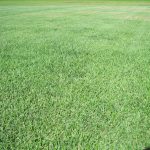
Although many grasses look similar it is important to know exactly what kind you have to maintain it properly. This photo shows Empire Zoysia. Photo credit: Julie McConnell, UF/IFAS
Why is it important to know the species of turf in a lawn?
Two of the most common mistakes extension agents observe is excessively low mowing height of St. Augustinegrass and over-fertilizing Centipedegrass. Both of these errors can reduce turfgrass vigor and decrease its tolerance to pest issues. Another potential maintenance pitfall is using a herbicide that is not labeled for use on a given type of turfgrass. Several popular herbicides available on the market can cause damage to St. Augustinegrass and/or Centipedegrass. Thus turf can be inadvertently killed by herbicides when they are applied to the wrong species.
Before a lawn maintenance plan is developed, be sure to know what type of grass is present and then follow UF/IFAS recommendations for proper care. If assistance is needed with identification, contact your local extension office.
To learn more about lawn care, visit this site or plan to attend “Caring for Your Florida Lawn” at the UF/IFAS Extension Bay County office on April 8th. For more details call 850-784-6105.
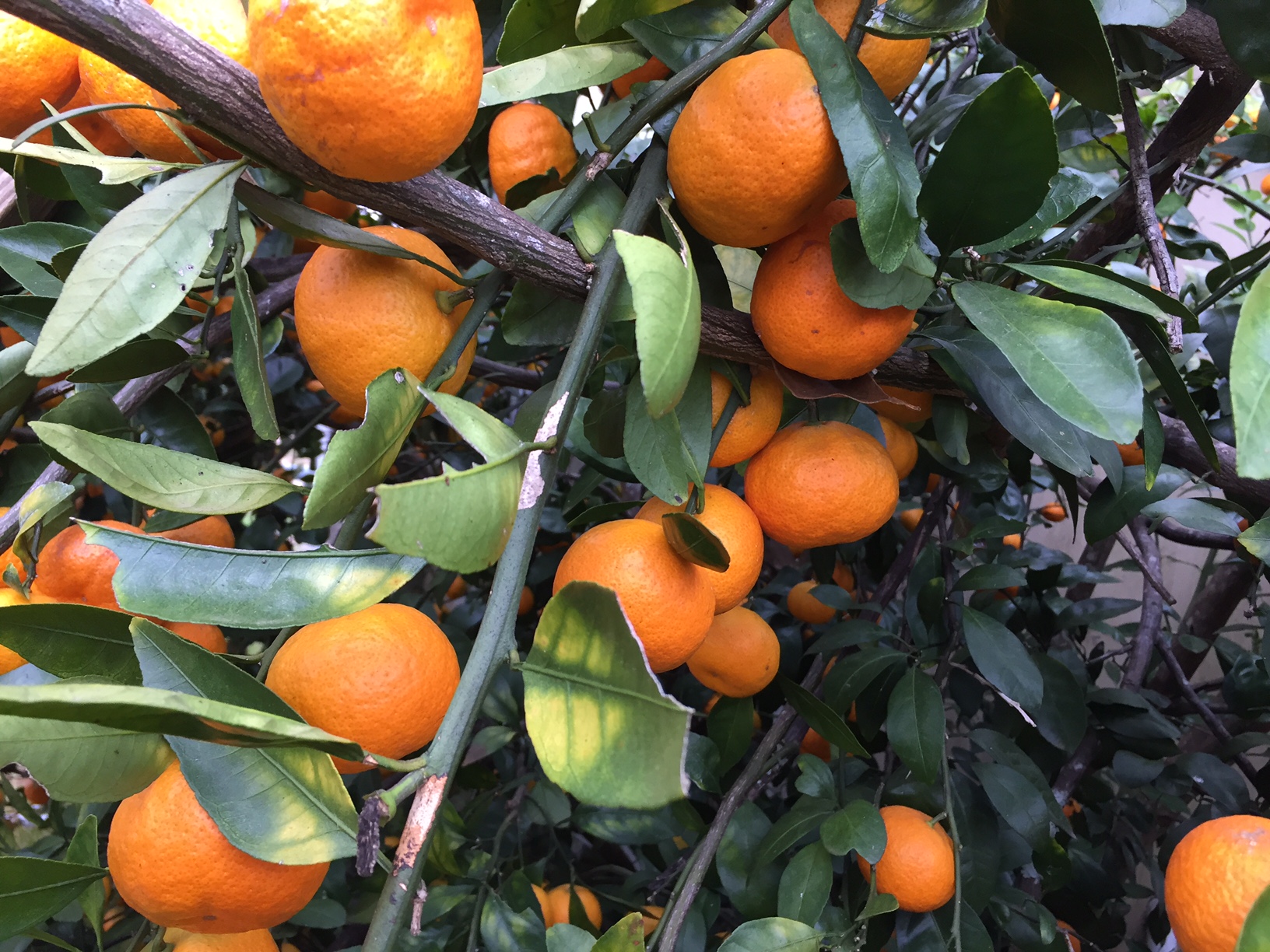
by Matthew Orwat | Feb 14, 2017
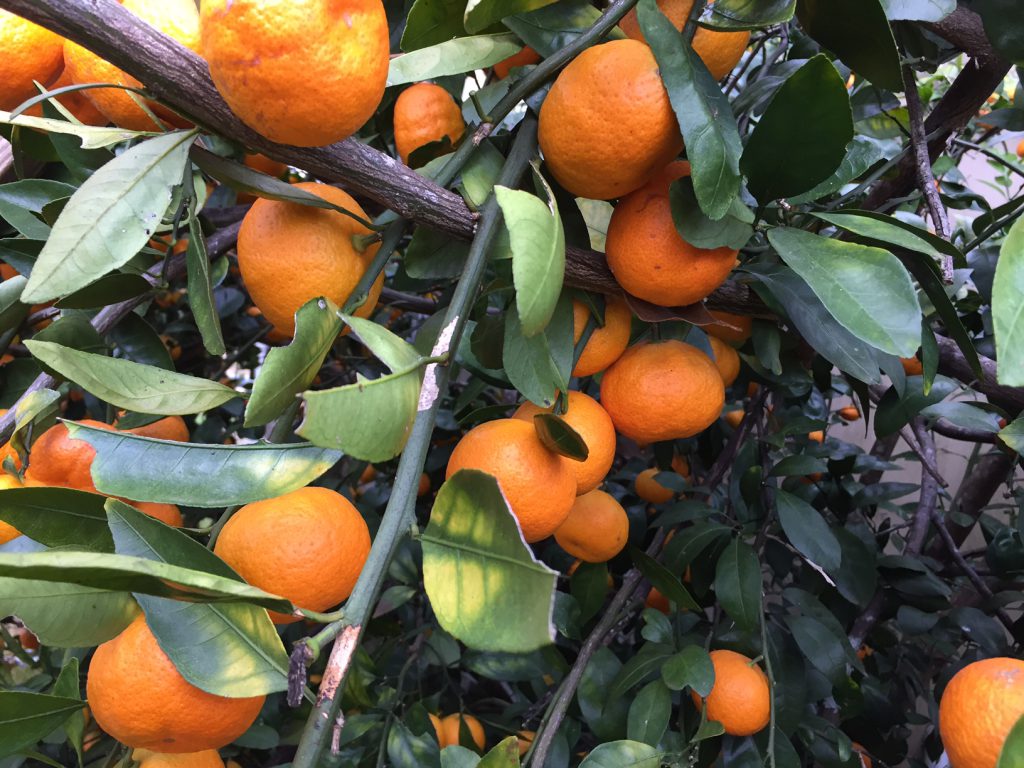 Dooryard citrus enthusiasts may be uncertain about late winter management of Satsuma and other citrus trees. Several questions that have come in to the Extension Office recently include:
Dooryard citrus enthusiasts may be uncertain about late winter management of Satsuma and other citrus trees. Several questions that have come in to the Extension Office recently include:
- Should I prune my trees?
- Why are the leaves yellow?
- How soon should I fertilize?
The focus of this article is to provide some answers to these common questions.
Should I prune my trees?
This is a complicated question that is best answered with “it depends…” Pruning is not necessary for citrus, as it is in many temperate fruits, to have excellent production quality and quantity. Citrus trees perform excellently with minimal pruning. The only pruning necessary for most citrus is removing crossing or rubbing branches while shaping young trees, removing dead wood, and pruning out suckers from the root-stock. Homeowners may choose to prune citrus trees to keep them small, but this will reduce potential yield, since bigger trees produce more fruit.
Often, maturing Satsuma trees produce long vertical branches. It is tempting to prune these off, since they make the tree look unbalanced. To maximize yield, allow these branches to weep with the heavy load of fruit until they touch the ground. This allows increased surface area for the tree, since the low areas around the trunk are not bare. Additionally, weeds are suppressed since the low branches shade out weed growth. The ground under the trees remains bare, thus allowing heat from the soil to radiate up during cold weather events. The extra branches around the trunk offer added protection to the bud union as well. If smaller trees are desired for ease of harvest, ‘flying dragon’ root-stock offers dwarfing benefits, so that the mature scion cultivar size will only grow to 8-10 feet tall.
Heavy fruit loads were produced in many home gardens throughout Northwest Florida last year. When fruiting is heavy, citrus trees translocate nitrogen and other nutrients from older leaves to newer growth and fruit. Therefore, temporary yellowing may occur and last until trees resume growing in the spring. Remember, never fertilize after early September, since fertilizing this late in the year can reduce fruit quality and increase potential for cold injury. If a deficiency, as in the photo above persists through spring, consider a soil test, or consult a citrus production publication to determine if additional fertilizer should be added to your fertilizer program.
How soon should you fertilize?
Although most Florida citrus publications recommend fertilizing citrus in February, they don’t take into account the potential for late frost in the Panhandle. Thus it makes more sense to wait until mid-March for the first fertilizer application in this region. Citrus trees don’t require a fertilizer with a high percentage of nitrogen, so it is best for fruit quality if an analysis of around 8-8-8 with micro-nutrients is used. Fertilizer should be applied in the drip-line of the tree, not around the trunk. The drip-line of a mature tree is generally considered to extend one foot from the trunk out to one foot from the edge of the furthest branch tip from the trunk. For fertilizer quantity recommendation see the chart below.
Through awareness of the unique managements techniques inherent to dooryard citrus production in the Panhandle, home gardeners are offered an opportunity to provide their friends and family with a substantial portion of their annual citrus !
For more information on this topic please use the following link to the UF/IFAS Publication:
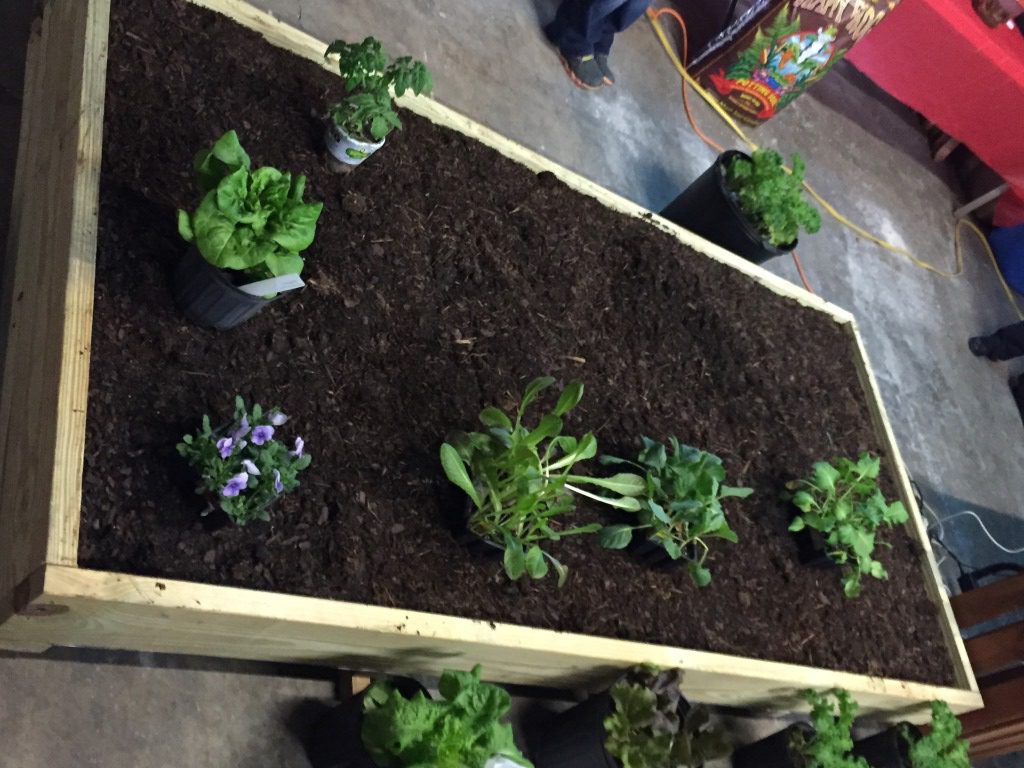
by Matthew Orwat | Jan 26, 2017
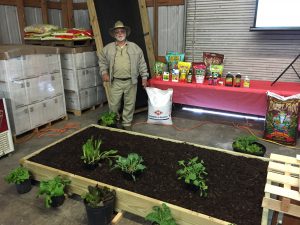 Now is the time to start planning for a spring garden! There are many different methods of successful gardening but here I’d like to discuss raised bed gardening.
Now is the time to start planning for a spring garden! There are many different methods of successful gardening but here I’d like to discuss raised bed gardening.
A few advantages of raised beds:
- Raised bed gardens provide an opportunity to bring the family together for some quality time. Add ways that you can enjoy the time with your spouse, child or grandchild. This gives you a chance to see the wonder on their faces as the plants sprout and flourish.
- Share the joy as you smell the flowers and pick the fruit.
- Provide a bouquet for the table as you add an item from the garden to your family meal.
A special kind of raised bed garden, known as an enabling garden, provides individuals needing assistance a way to garden with ease. Many have the impression that building such a garden is expensive, but it is not much more expensive or difficult than building a raised bed garden on the ground. First, begin by trimming and framing a raised bed garden just as you would for a ground level raised bed.
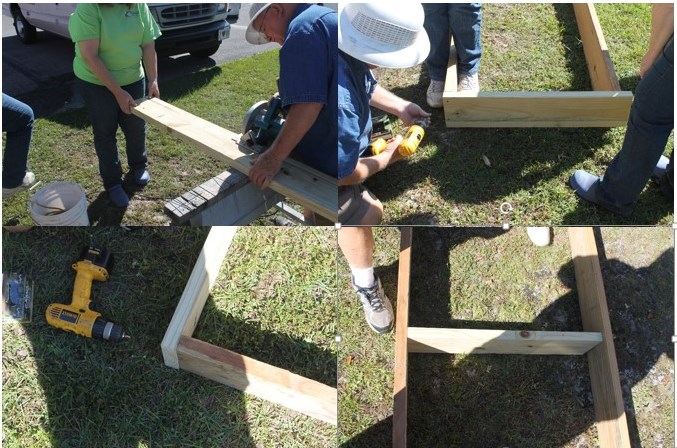
Materials
- 2 – (2X8) boards 14 foot long (treated or cedar)
- 2 – 2 ½ foot end pieces trimmed from a 2×8 board (treated or cedar)
- Central brace board trimmed to fit the inside of the bed
- 16 – 3 inch screws
- Table Saw
- Drill
- Extension Cord
- Durable base such as metal screening, lined with permeable weed barrier, attached to the frame securely.
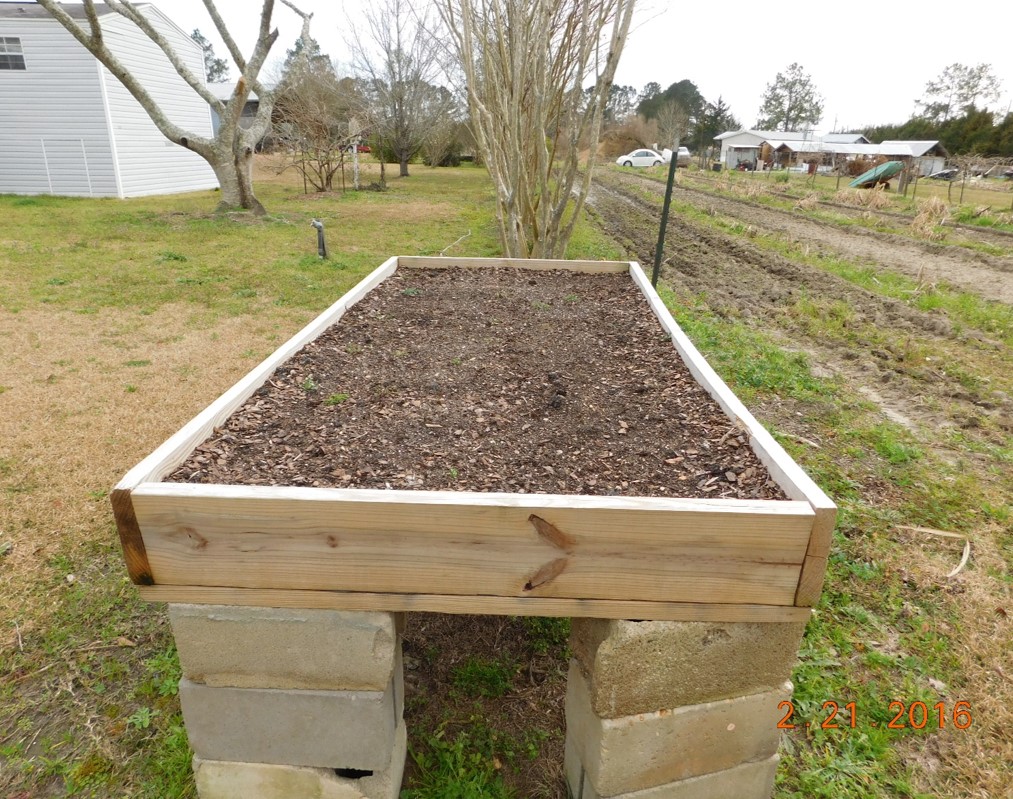
Once it is made, raise it to the desired level by placing it on cinder blocks. Add enough soil or compost to mound slightly higher than the lumber. Make sure the compost is well rotted, or use sterile potting soil. Don’t use soil from the garden since it may contain root diseases. Smooth out media evenly. Purchase a drip hose or line and run back and forth over the center area. Young plants will not have a large root so make sure the irrigation delivers adequate water to the entire bed.

Many different vegetables herbs can be grown in raised beds but peppers, squash, eggplant, cherry tomatoes, basil, thyme, oregano and mint make excellent choices for a spring raised bed. Happy Gardening !














